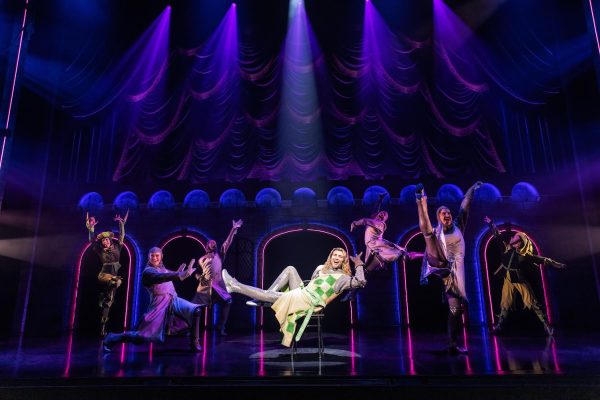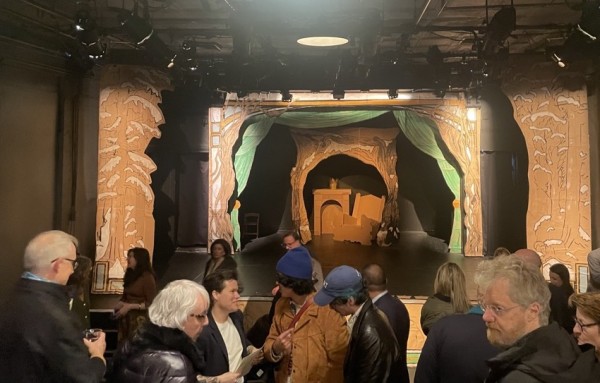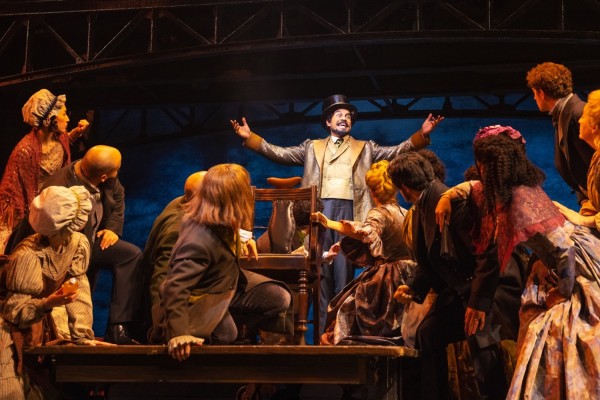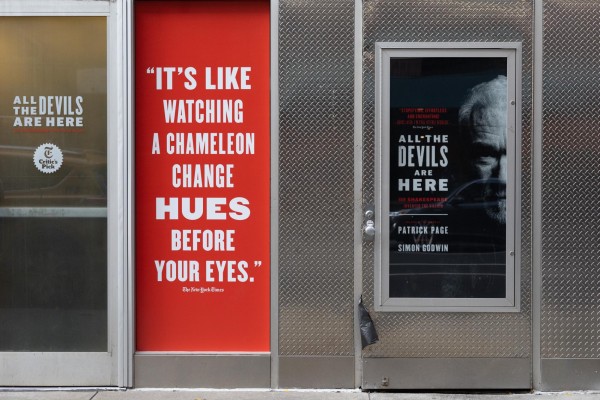Interpretation of Hercules’ labors portrayed in new play
The husband gone to war, the wife struggling to run a farm by herself, the young, pregnant daughter unfit to be a mother — these stories have been told before. However, in Leegrid Stevens’ play “The Twelfth Labor,” these archetypal characters take on new personas to create a fresh outlook on wartime farm life.
Set in the 1940s, amid World War II and its aftermath, “The Twelfth Labor” mirrors the twelve labors of Hercules. Stevens adds a new spin on the classic tale by arguing that the twelfth and final labor remains elusive — he believes the human struggle never truly ends.
Following Stevens’ concept, “The Twelfth Labor” tells the story of Esther (Lynne McCollough), a stern and sour-faced mother fighting to hold down the family farm while her husband (Jed Dickson) is held as a prisoner of war in Japan. The play’s central conflict occurs as a result of the pregnancy of their mentally handicapped daughter, Cleo (Erin Treadway).
From the first moments after the lights dim, the minimalist, wooden set, reminiscent of Thornton Wilder’s “Our Town,” transforms into a clear representation of the family’s prairie home. Adelpha (Cynthia Babak), O’Meggie (Amy Bizjak) and Almittie (Michael Huston), the three gossiping women in town, instantly grasp the audience’s attention. The actors’ wittiness and dedication to their actions, especially those of Huston, act as elements of cohesion throughout the play.
As the dramatic focal point, Treadway fearlessly pursues the complications of her character, embodying Cleo’s series of dreams, fantasies and stories that morph into her one collective experience. Treadway so convincingly portrays the convulsions and abruptness of Cleo’s realities that one believes they are indeed very real. Her performance is ultimately only outshined by that of McCullough, who outstandingly channels Meryl Streep’s meaner, stronger character in the film adaptation of “August: Osage County.”
Despite limitations due to the theater’s small space and inability to accommodate a full curtain masking the stage, scene changes and entrances flow seamlessly and without trouble. However, there is often confusion about which locations represent the points of entrance — the boundaries of the house are often lost on the audience.
At the culmination of the play’s third act, Dickson gives a rousing, multi-minute monologue that never lags or becomes uninteresting. Grappling with vivid recollections of life in a Japanese prisoner of war camp, Dickson’s emotion is so captivating that the play should have ended with the monologue. While the final act displays the best, most genuine acting in the entire play — it features a climactic mother/daughter struggle — its presence seems unnecessary for the overall flow.
As a result, what begins and develops as a beautifully executed and emotionally jarring plot becomes a somewhat convoluted, drawn-out performance. However, despite the play’s questionable length, gripping performances by McCollough and Hightower make the final act worth the wait.
By the play’s conclusion, Cleo clearly represents how humans take their own lives and gifts for granted, taking an overall somber ending and creating inspiration for living a better life. As she says in the show’s final scene, quoting Scarlett O’Hara’s character in “Gone with the Wind,” “After all, tomorrow is another day.”
“The Twelfth Labor” is playing at the Gene Frankel Theatre, 24 Bond St. through Oct. 11.
A version of this article appeared in the Tuesday, Oct. 7 print edition. Email Porter Yelton at [email protected].






















































































































































emoviestv • Oct 27, 2014 at 10:40 pm
Johnson is genuinely talented. He’s often the best thing in bad movies, and Ratner’s Hercules is, at the very least, pretty good.
pocacinema • Oct 27, 2014 at 10:38 pm
It’s a really wonderful action movie and really get into the legend of the character. I don’t get what others they want: an epic mythological movie must be really epic action, great beasts and powerful gods. And Hercules is probably the best of this
pocacinema • Oct 27, 2014 at 10:37 pm
I really liked this movie. Characters are O.K, storyline is old-fashioned and everything else is placed good.
Characters are detailed in the way I like. Good acting (voice acting too). The Rock rocked this movie! Storyline is like the old one and a lot more. I enjoyed watching this 3D and relaxing.
popoca • Oct 27, 2014 at 10:36 pm
Definitely not a bad movie. But overall I really feel it was a big missed opportunity because of what people typically think of when we see “Hercules”. I wished the plot would have been more focused on mythical creatures and superhuman strength and greek gods. That being said I do like Dwayne Johnson and thought he did a good job here with great action scenes… just a uninspired story. Overall was hoping the movie would be more epic.
emoviestv • Oct 27, 2014 at 10:35 pm
The film fluctuates haphazardly between semi-serious reverence and tongue-in-cheek camp, with no shortage of opportunities for the inevitable Rifftrax accompaniment.
movie8k • Oct 27, 2014 at 10:34 pm
Director Brett Ratner could boast solid source material in the five-issue Radical Comics series Hercules: The Thracian Wars by the late Steve Moore. They had a shot at something here, and they blew it.
zumvo • Oct 27, 2014 at 10:34 pm
As the plot clogs up with foreseeable reversals, wisecrack duties go to Mr. McShane, whose oracular character keeps wrongly predicting his own death. Like Hercules, the movie is plagued by a split identity: It’s half-slog, half-Mel Brooks.